A Modified Skyline
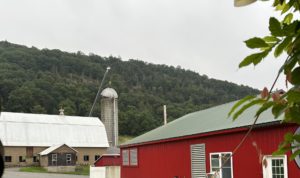 The silhouette of our family farm has recently changed. In late July, we said goodbye to our trusty tower silo which has stood empty for the last several years. And while it is a little sad to lose this mammoth feature on the landscape, in its footprint we are making way for something even better.
The silhouette of our family farm has recently changed. In late July, we said goodbye to our trusty tower silo which has stood empty for the last several years. And while it is a little sad to lose this mammoth feature on the landscape, in its footprint we are making way for something even better.
The white, concrete stave silo was erected in 1989 next to the blue, glass lined steel silo which went up in 1984. Our first tower silo marked an important milestone for efficiency, feed quality, and milk quantity for our dairy: SILAGE.
The Season of Silage
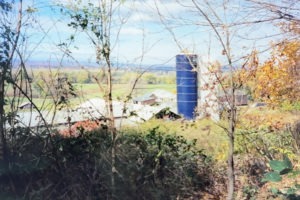 Silage is a type of fodder made from green foliage crops with high moisture (like grass, corn, sorghum, alfalfa, etc.), which have been preserved by fermentation to the point of acidification while in storage.
Silage is a type of fodder made from green foliage crops with high moisture (like grass, corn, sorghum, alfalfa, etc.), which have been preserved by fermentation to the point of acidification while in storage.
Generations five and six invested in tower silos in the 80’s because the benefits of silage are many:
- Making silage is faster, a lot less labor intensive, and is somewhat less dangerous than baling hay.
- Weather during harvest need not be as fair and dry as when harvesting crops for drying – like baled hay.
- During fermentation, silage bacteria creates a natural preservative which locks in the nutritional value of the crop and prevents spoilage. This means we are feeding high quality, consistent feed, year round, from the land that we farm.
- Ensiling has the effect of improving the digestibility and the taste of the feed for our animals, yum! Feed that is more easily digested produces fewer gas bubbles in the stomach and therefore reduces enteric methane.
- Several of the fermenting organisms in silage produce vitamins, for example folic acid and vitamin B12, making good food even better for our girls.
- There is more caloric energy in silage than in plain old hay which allows our animals to produce a higher volume of milk at a higher quality (more butterfat, more protein).
These days, we get 4-5 cuttings of hay each year and one big harvest of corn. We make haylage and corn silage with all that fodder and each cut takes 4 to 8 days (fewer days for hay, one big push for corn). Thanks to technology, we can pin-point the peak harvest time and get that crop cut and stored at the height of nutritional value.
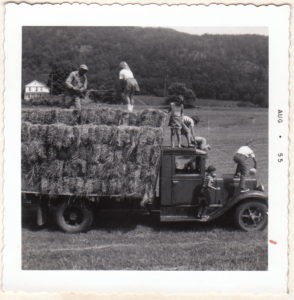 Compare that to pre-silo time where our dairy herd was fed only dry hay that we baled ourselves. The harvest never quit, from May to October, mowing and baling hay was a daily farm chore that took a great deal of time, fuel, hands, heavy lifting, and luck with the weather.
Compare that to pre-silo time where our dairy herd was fed only dry hay that we baled ourselves. The harvest never quit, from May to October, mowing and baling hay was a daily farm chore that took a great deal of time, fuel, hands, heavy lifting, and luck with the weather.
Forage Storage
The two tower silos changed the flow of the work day, the quality of the feed and in turn the quality and quantity of the milk. Back breaking, hot, dangerous, and endless work was replaced with something better. And another decade later, the tower silo technology was replaced with something better too.
Bunker silos are now the standard on a dairy farm. And similar to the benefits of silage, the benefits of bunker silos are many:
- They offer significantly faster unloading rates then tower silos which is good news for labor efficiency.
- When packed correctly, forage quality changes occur gradually, allowing for a more consistent ration across many months.
- Bunker silos, again, when packed well, generate less rot and therefore less food waste. More of the feed is usable, and unlike the tower silo, you can easily see and pick out any rotten spots to discard.
- Silage moisture can be a bit higher than if it were being packed into a tower silo. This is particularly useful as climate change brings wetter weather to New England.
- The bunker silo presents a “fall from height” hazard, but that is perhaps easier to manage than the “suffocation from quick-sand-like feed” or and “asphyxiation from gas” hazards presented by a tower silo.
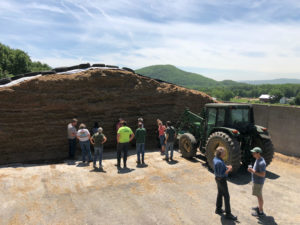

What’s New?
So what will go into the shadow of the silo? Well, now that I’ve excitedly chatted about silage and silos for most of this newsletter, that announcement will have to wait for another day! (She must have been planning this teaser all along!… yes, I was.)
![]()
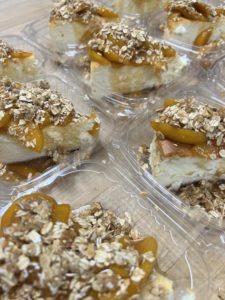 In the meantime, Barstow’s Dairy Store and Bakery is already dabbling in fall flavors: hello apple pie, apple pie bars, peach crisp cheesecake, and cheesy kielbasa potato soup. We are looking forward to our Open Farm Saturday on October 14. And we are hiring dishwashers and customer service associates who would like to join our team at Barstow’s!
In the meantime, Barstow’s Dairy Store and Bakery is already dabbling in fall flavors: hello apple pie, apple pie bars, peach crisp cheesecake, and cheesy kielbasa potato soup. We are looking forward to our Open Farm Saturday on October 14. And we are hiring dishwashers and customer service associates who would like to join our team at Barstow’s!
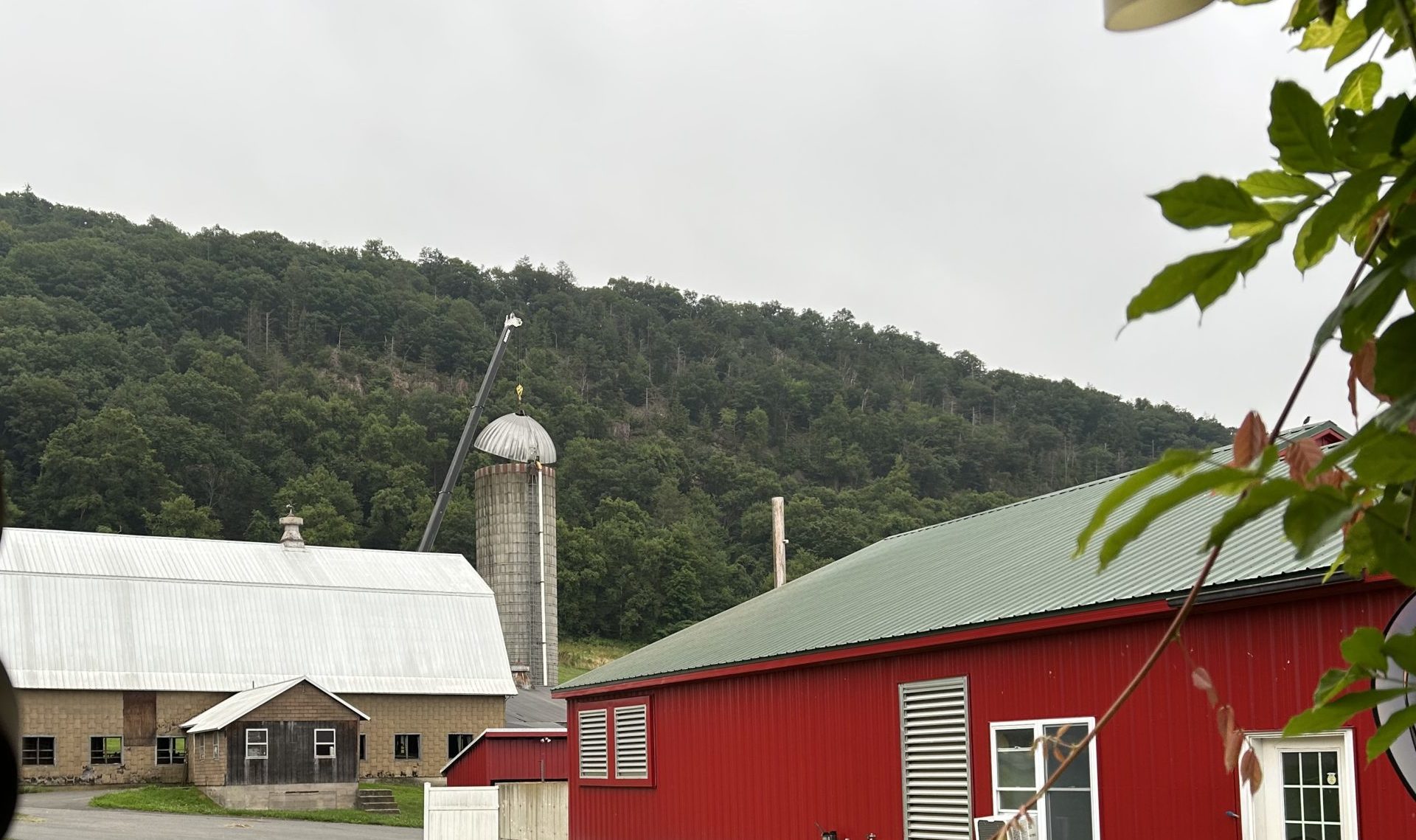
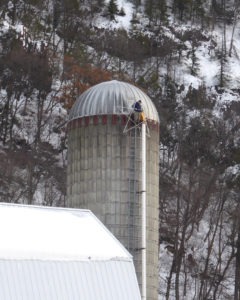 And if you are concerned about where our holiday star will be placed this year, no need to worry, we will find a spot. Even as our farm changes through the years, we will continue to make space for traditions to thrive.
And if you are concerned about where our holiday star will be placed this year, no need to worry, we will find a spot. Even as our farm changes through the years, we will continue to make space for traditions to thrive.